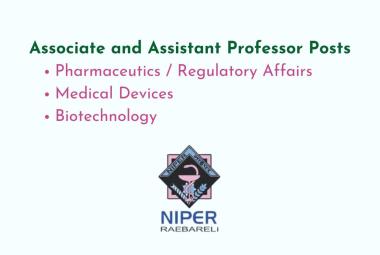Q.1. (a) Explain Beer’s Law and its limitations in quantitative estimation.
Ans.1.(a) Two separate laws governing absorption are usually known as lambert’s law and beer’s law, in the combined form they known as the beer’s-lambert law.
[adsense:336x280:8701650588]
Lambert’s Law: Lamberts law states that when monochromatic light passes through a transparent medium, the rate of decrease in intensity with the thickness of the medium is proportional to the intensity of the emitted light. This is equivalent to stating that the intensity of the emitted light decreases exponentially as the thickness of the absorbing medium increasing arithmetically, or that any layer of given thickness of the medium absorbs the same fraction of the light incident upon it. The law may be expressed by the differential equation:- -dt/dl = KI.
Where I is the intensity of the incident light of the wavelength λ, l is the thickness of the medium, and K is a proportionality factor. Integrating equation (1) and putting I= I0, when l= 0, we obtain:-
InI0/It = Kl.
Or put another way, It = I0e-kl
Where 10 is the intensity of the incident light falling upon an absorbing medium of thickness l, it is the intensity of the transmitted light, and K is a constant for the wavelength and absorbing medium used. By changing from natural to common logarithms we obtain.
It = 10×10-0.4343kl = 10×10-k1 eq.1
Where K = k/2.3026 and is usually called as ’absorption coefficient’, the absorption coefficient is generally defined as the reciprocal of the thickness (1cm) required to reduce the light to 1/10 of its intensity. This follows from equation (1) since:-
It/10 = 0.1 = 10-k1 or k1 = 1 , k= 1/1
The ratio It/It is the fraction of the incident light transmitted by a thickness l of the medium and is called the ‘transmittance’ T. its reciprocal I0/It is the ‘opacity’ and the ‘absorbance A of the medium is given by:-
A = log (10/It). Thus, A medium with absorption 1 for a given wavelength 10% of the incident light at that wavelength
Beer’s Law: We have so far considered the light absorption and the light transmission for monochromatic light as a function of the thickness of the absorbing layer only. In quantitative analysis, however, we are mainly concerned with solution. Beers studied the effect of concentration of the colored constitute in solution upon the light transmission or absorption.
He found the same relation between transmission and concentration as lambert had discussed between transmission and thickness of the layer. i.e. The intensity of a beam of monochromatic light decreases exponentially as the concentration of the absorbing substance increases arithmetically. This may be written in the form-
It = 10e-k’c
= 10×10-0.4343k’c. = 10×10-K’c
Where c is the concentration, and k’ and K’ are constants. Combining equation (x) and (y), we have:-
It = I0×10-acl or log (I0/I) = acl……………….equation (M)
This is the fundamental equation of colorimetry and spectrophotometry, and is often known as the ‘beer-lambert law’ or more recently as ‘beer’s law’.
The value of (a) will depend on how the concentration is expressed if c is expressed in molL-1 and l in cm than a is given the symbol E and called ‘molar absorption coefficient or molar absorptivity.
Beer’s law in quantitative analysis: Modern chemical analysis has routinely used spectrophotometry or quantitative use of beer’s law in agricultural, clinical, environmental, pharmaceutical, and quality control laboratories for over fifty years. Spectrophotometry is the study of absorption or emission of light by a chemical species. The versatility and ease of spectrophotometry makes it a cost-effective way to analyze large numbers of samples and even provide in-line quality assurance for the manufacturing of food, beverage, agrochemicals, and pharmaceuticals. For example, this technique is routinely used in the beverage industry to monitor phosphates, sugars, and coloring agents in soft drink
Limitations: The beers law is rigorously obeyed provided a single species gives rise to the observed absorption. However, the law may not be obeyed when.
1. Different forms of the absorbing molecules are in equilibrium.
2. Solute and solvent form association complexes.
3. There is a thermal equilibrium between ground electronic state and excited state.
4. The compounds are charged by irradiation (fluorescent compounds).









